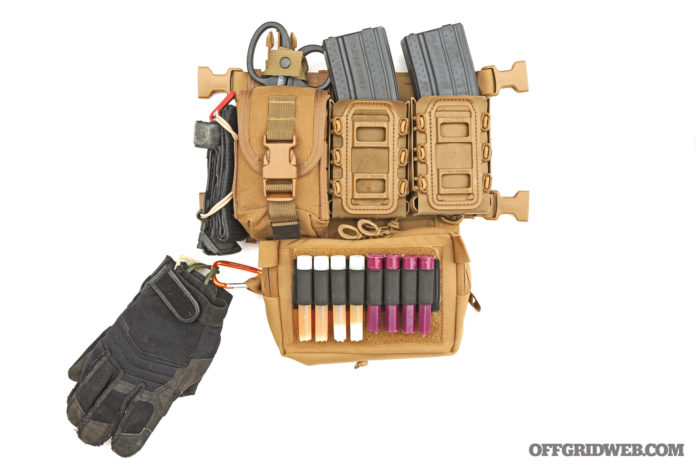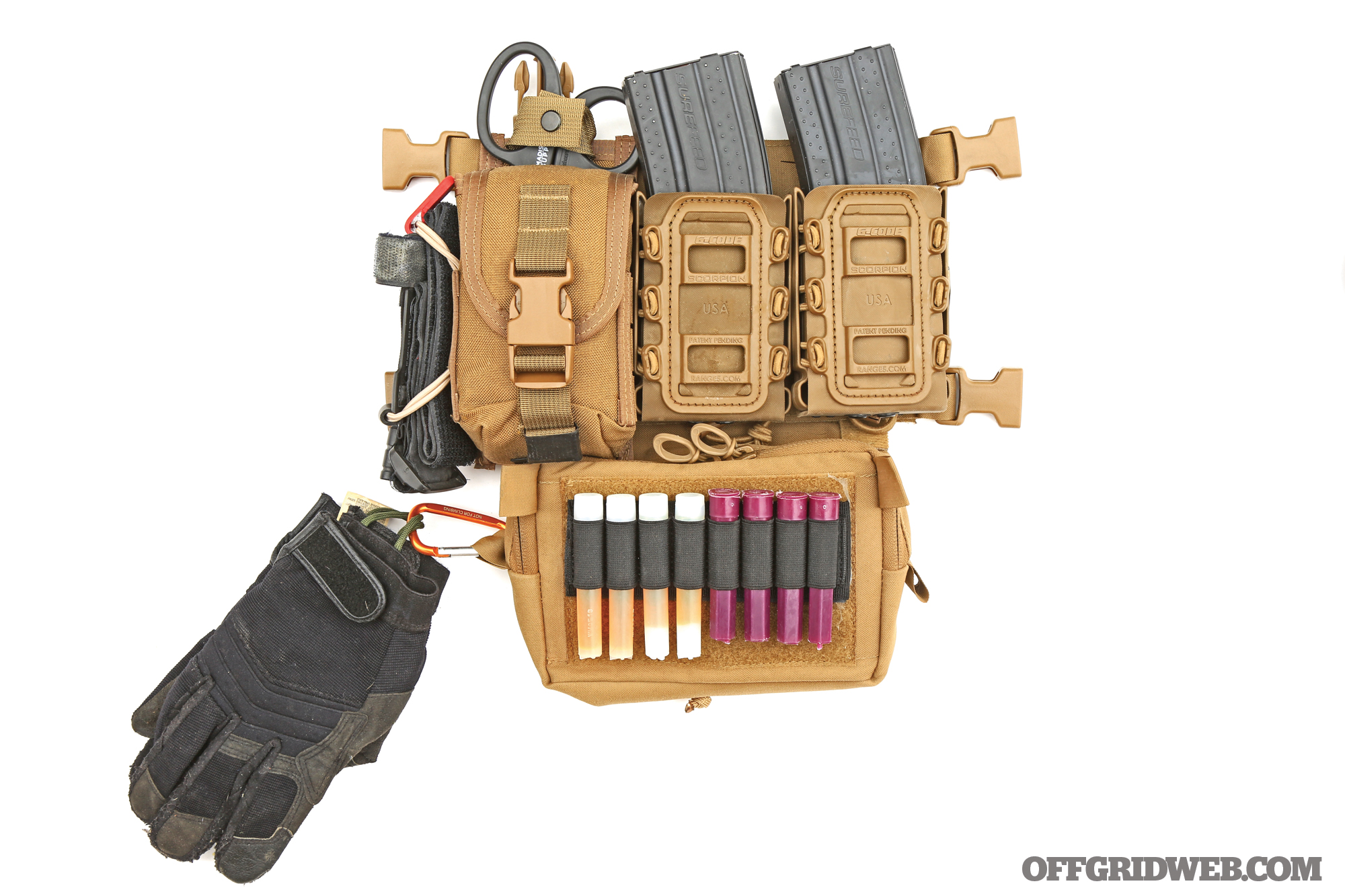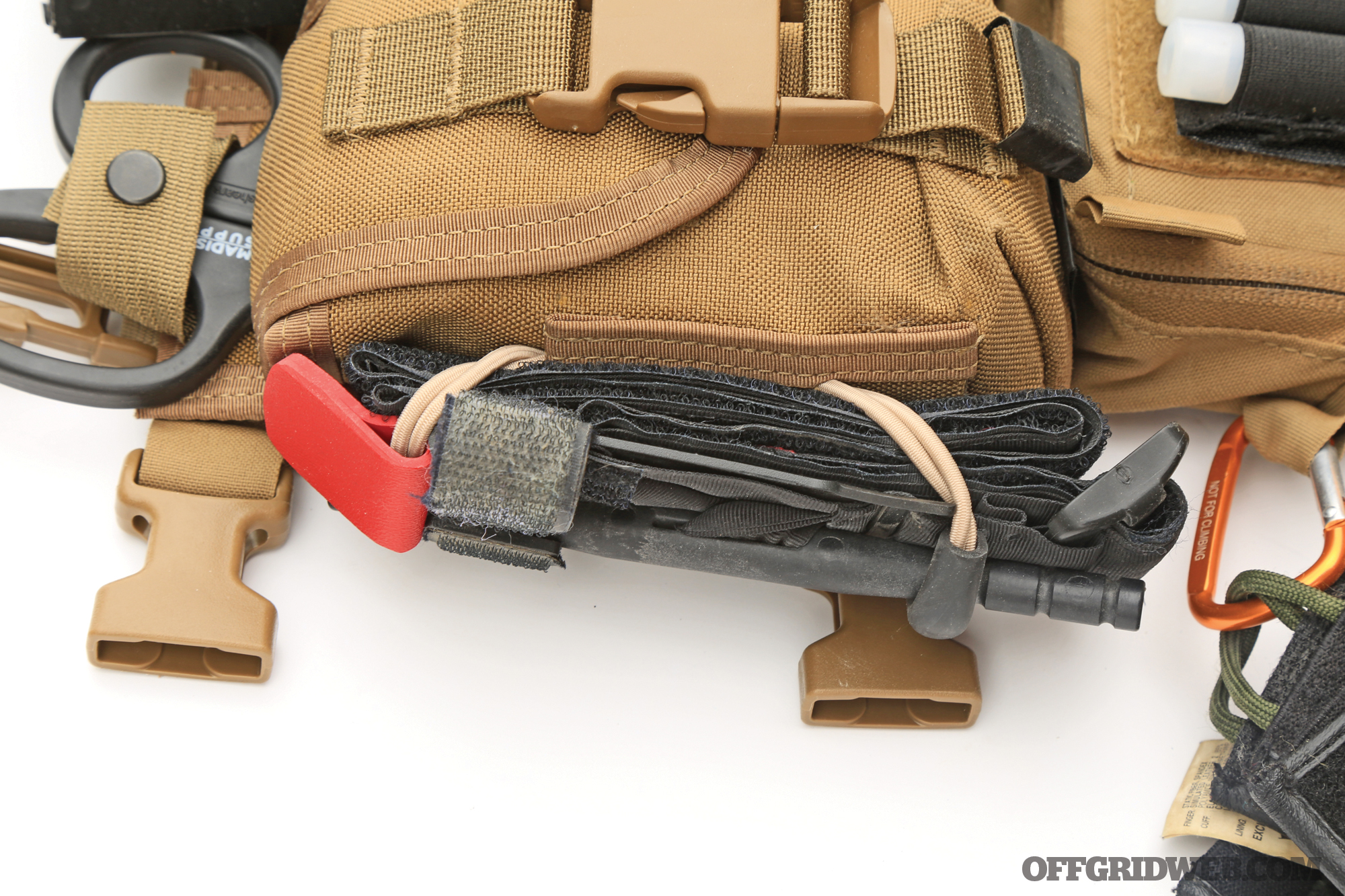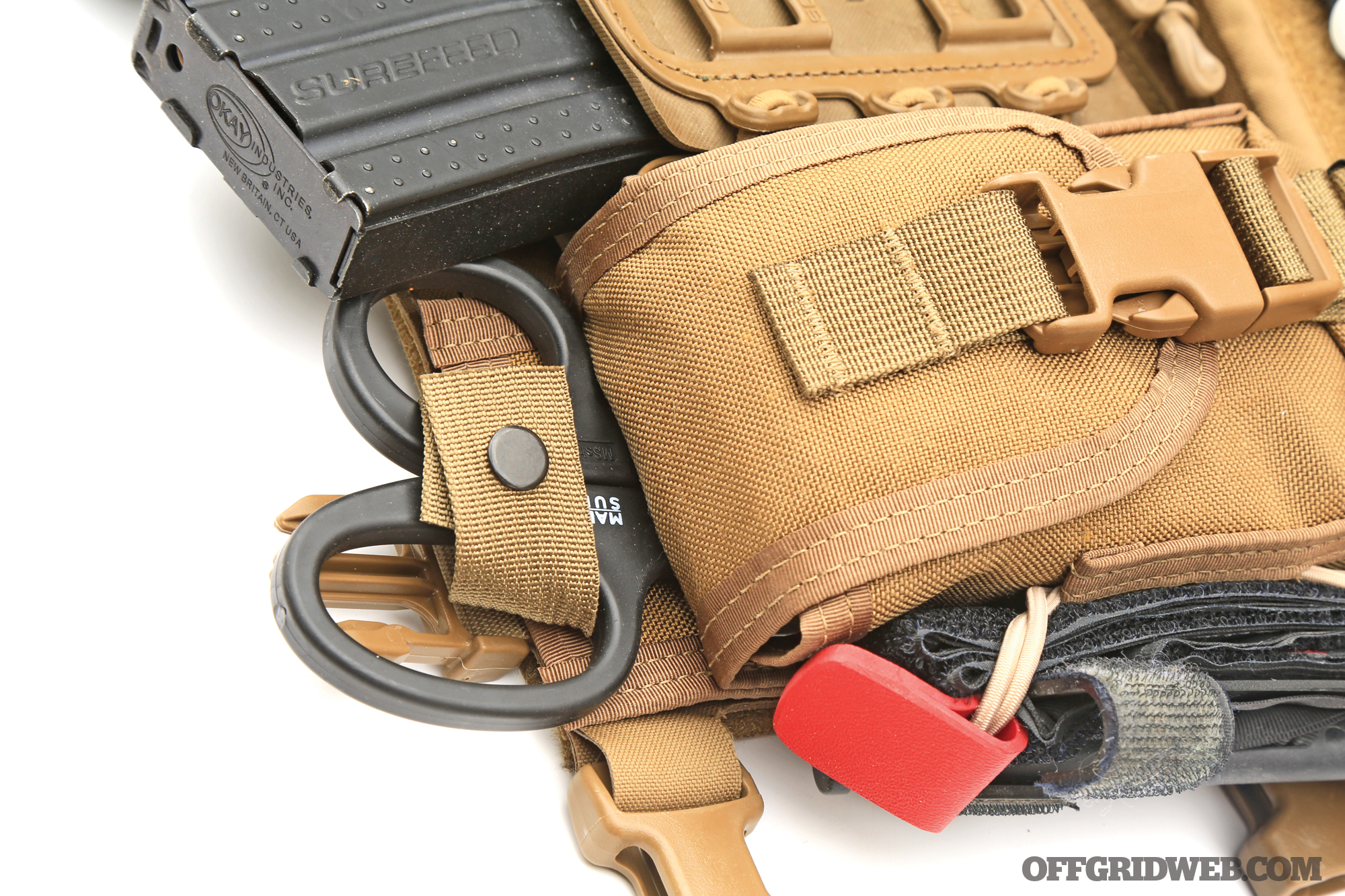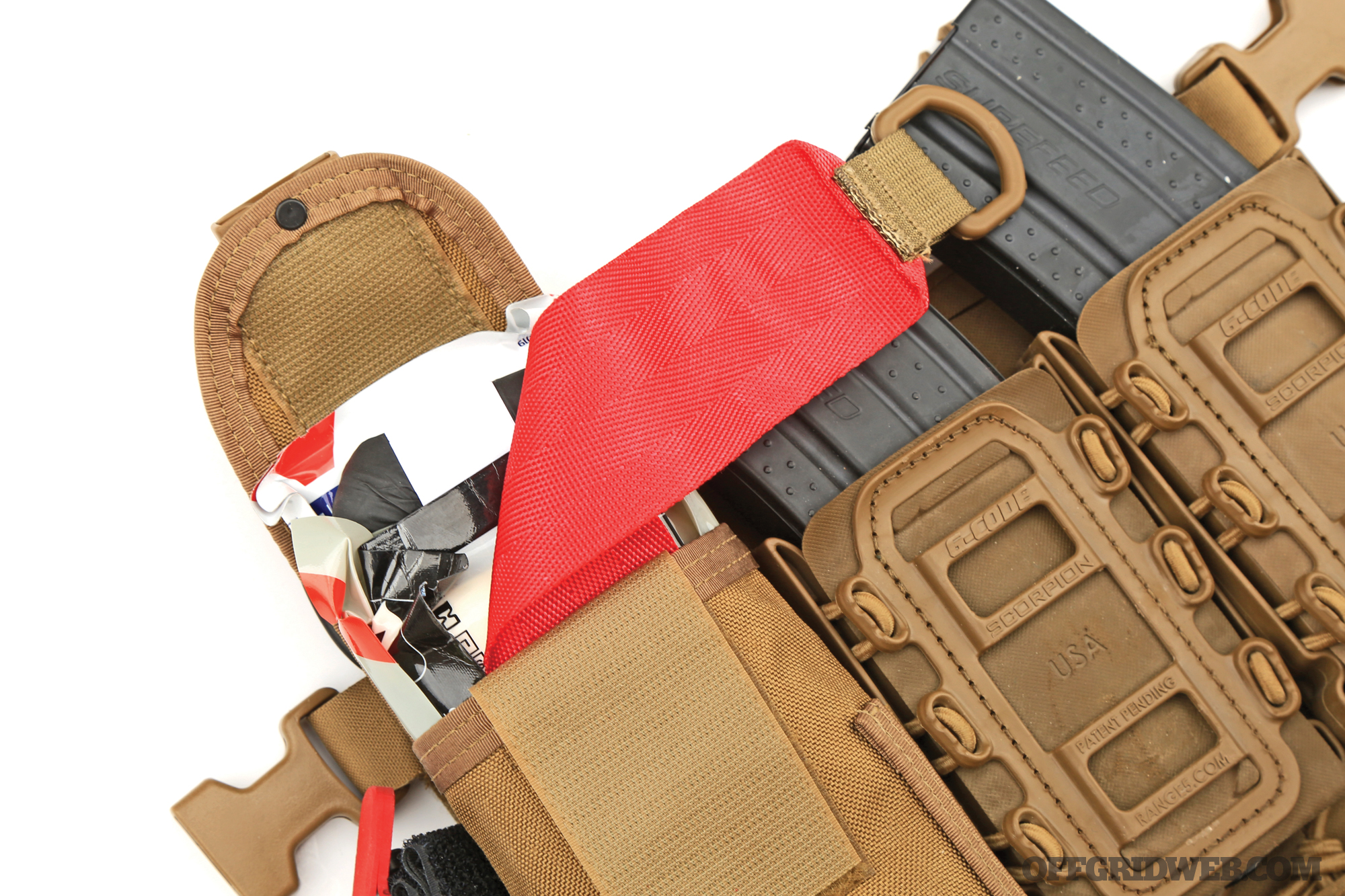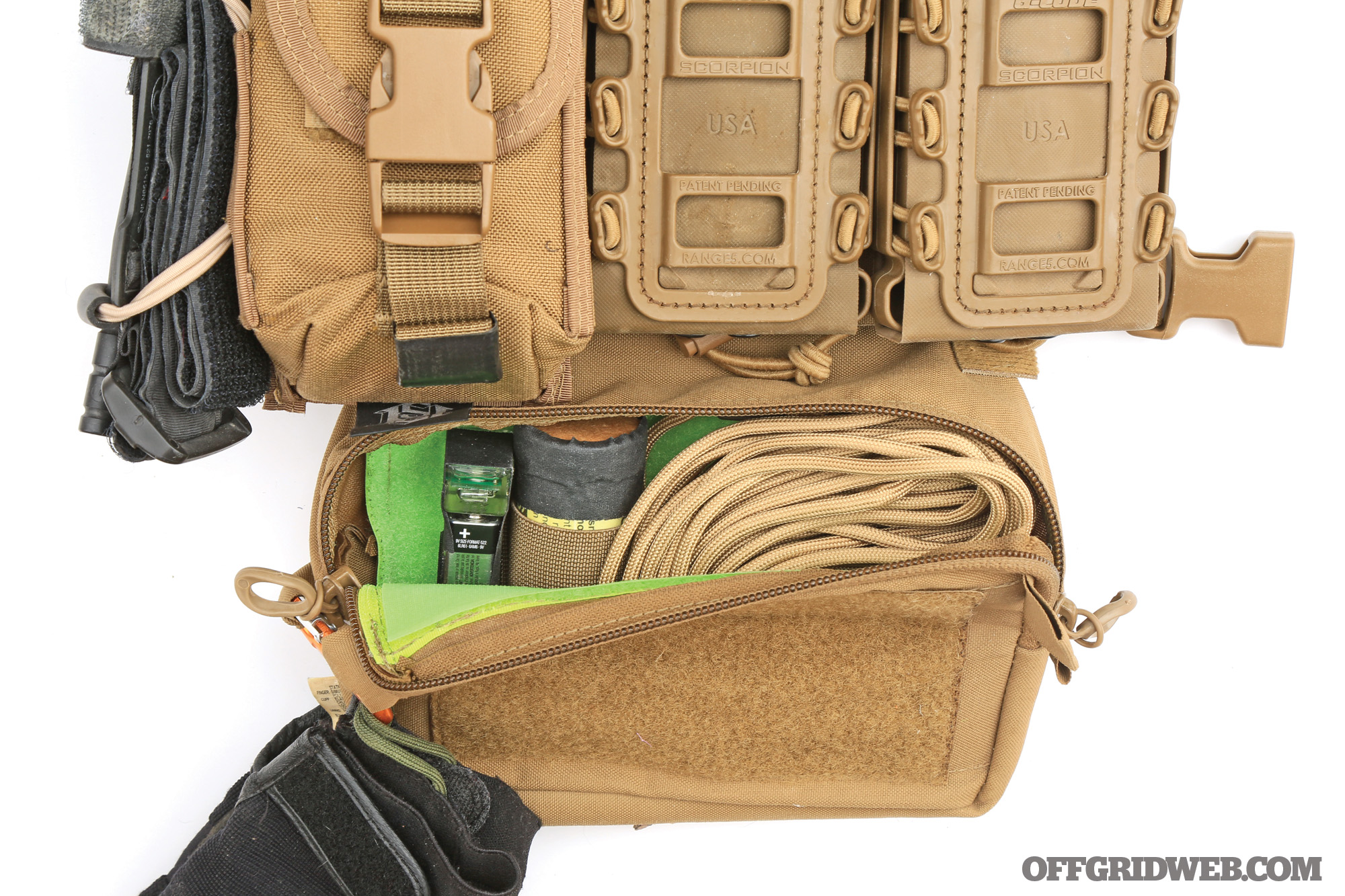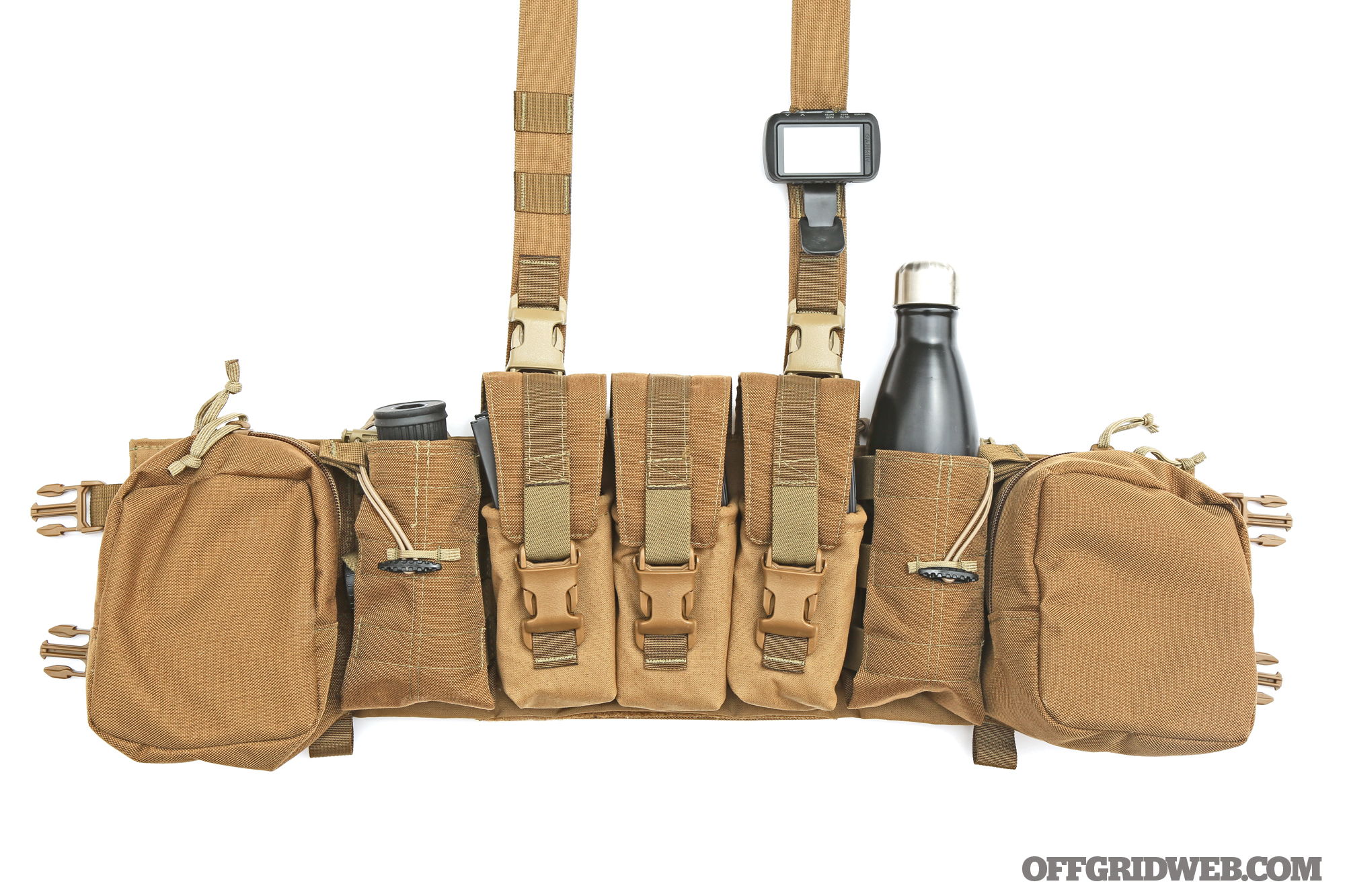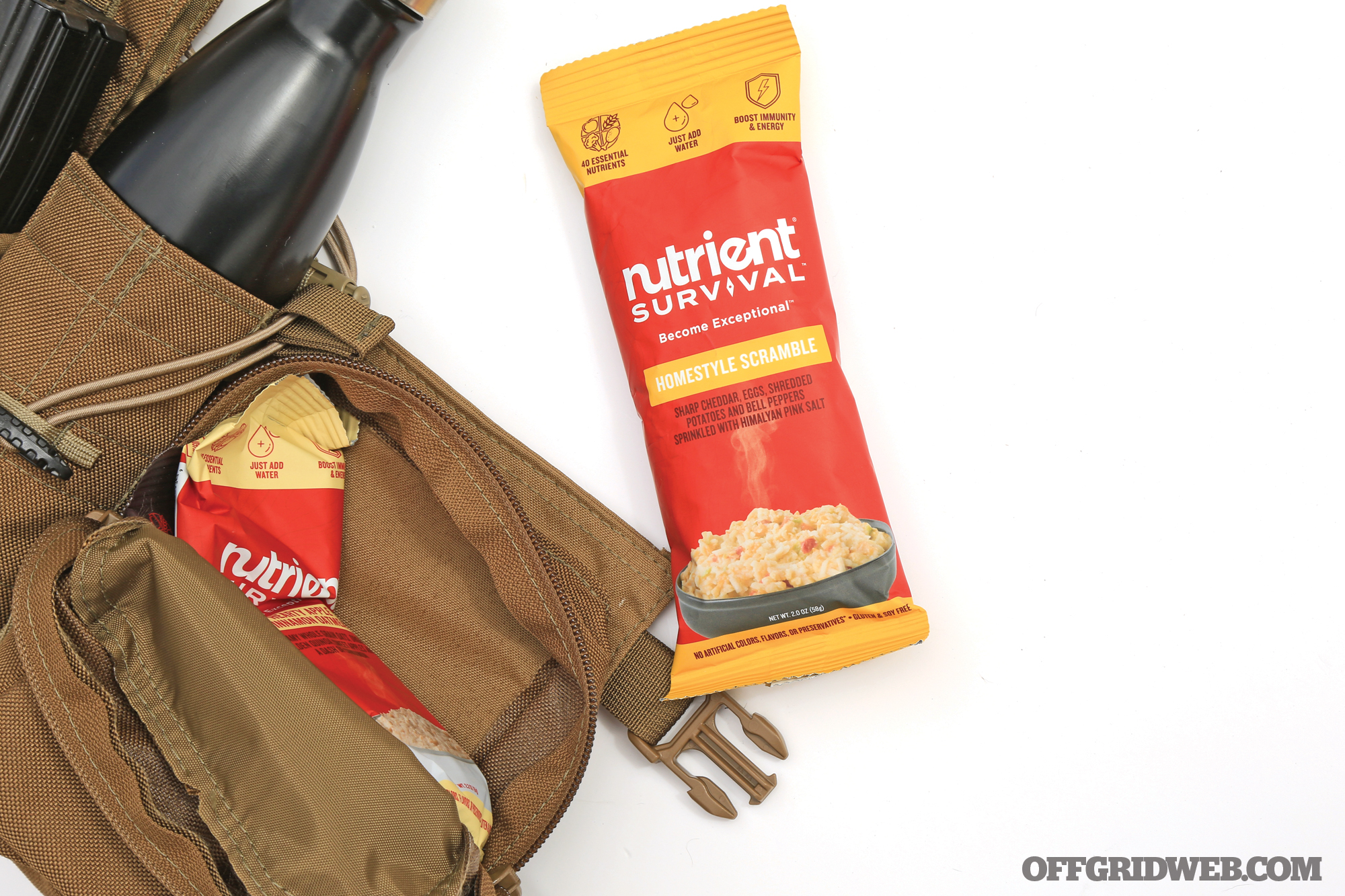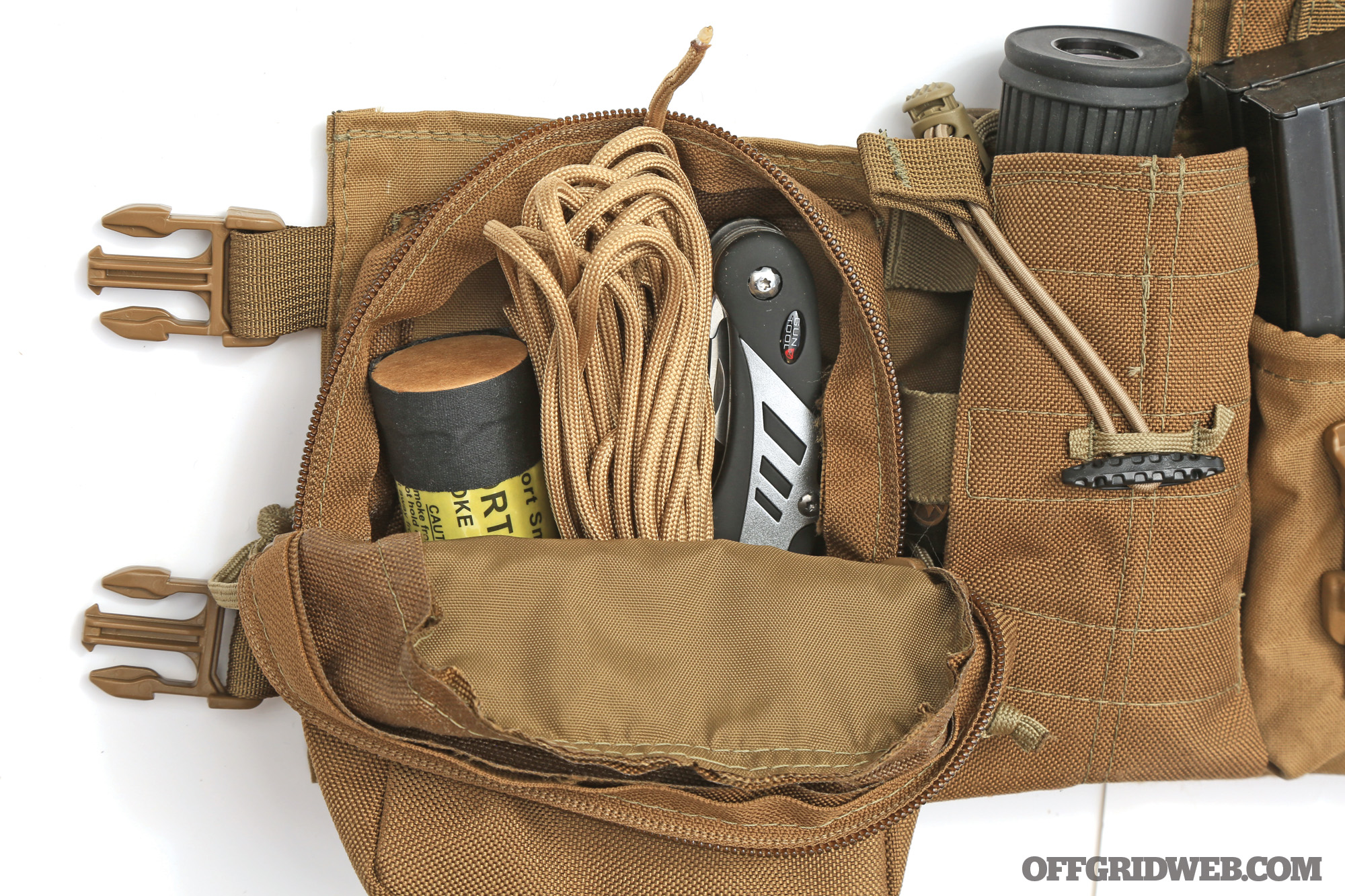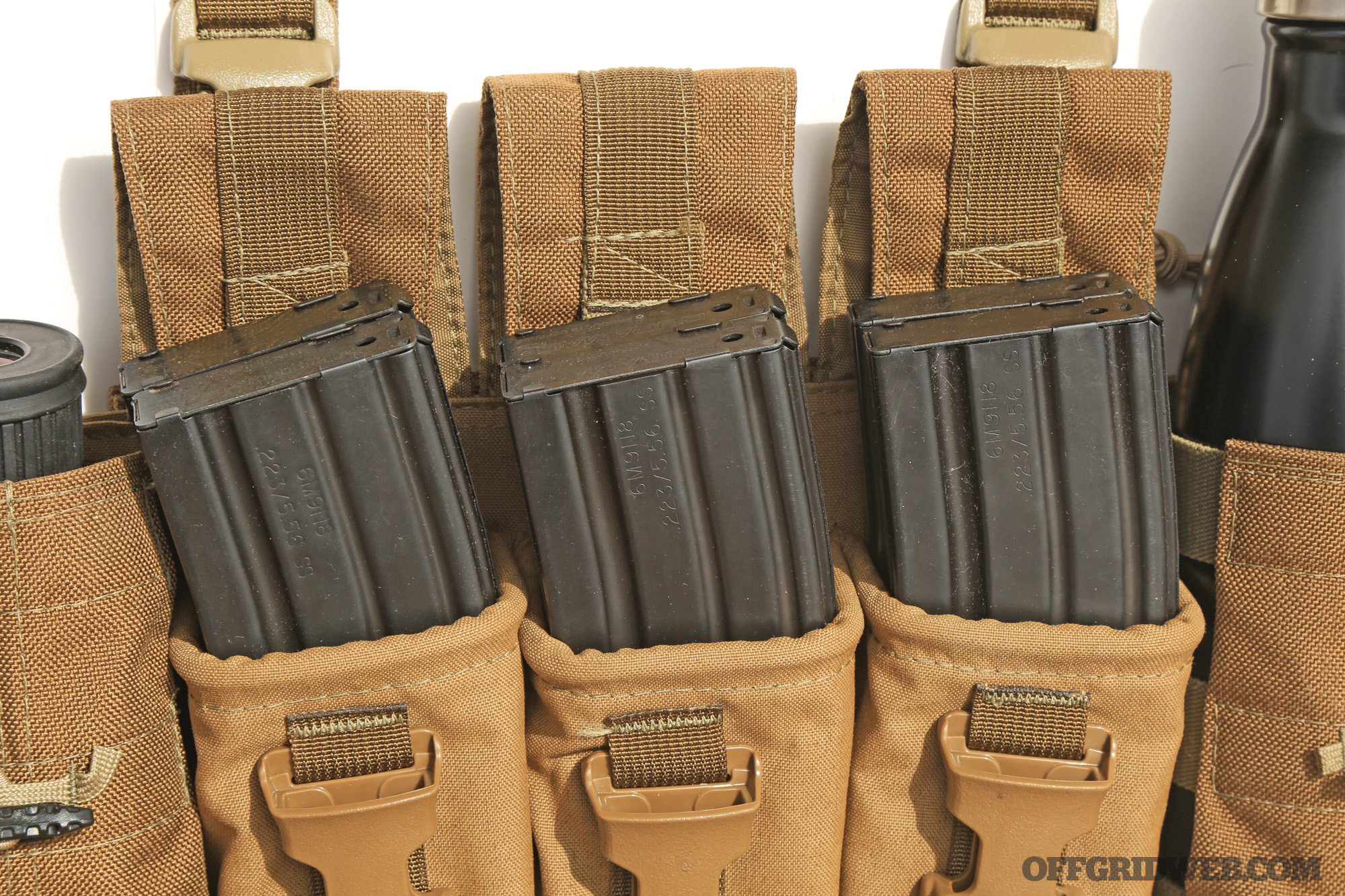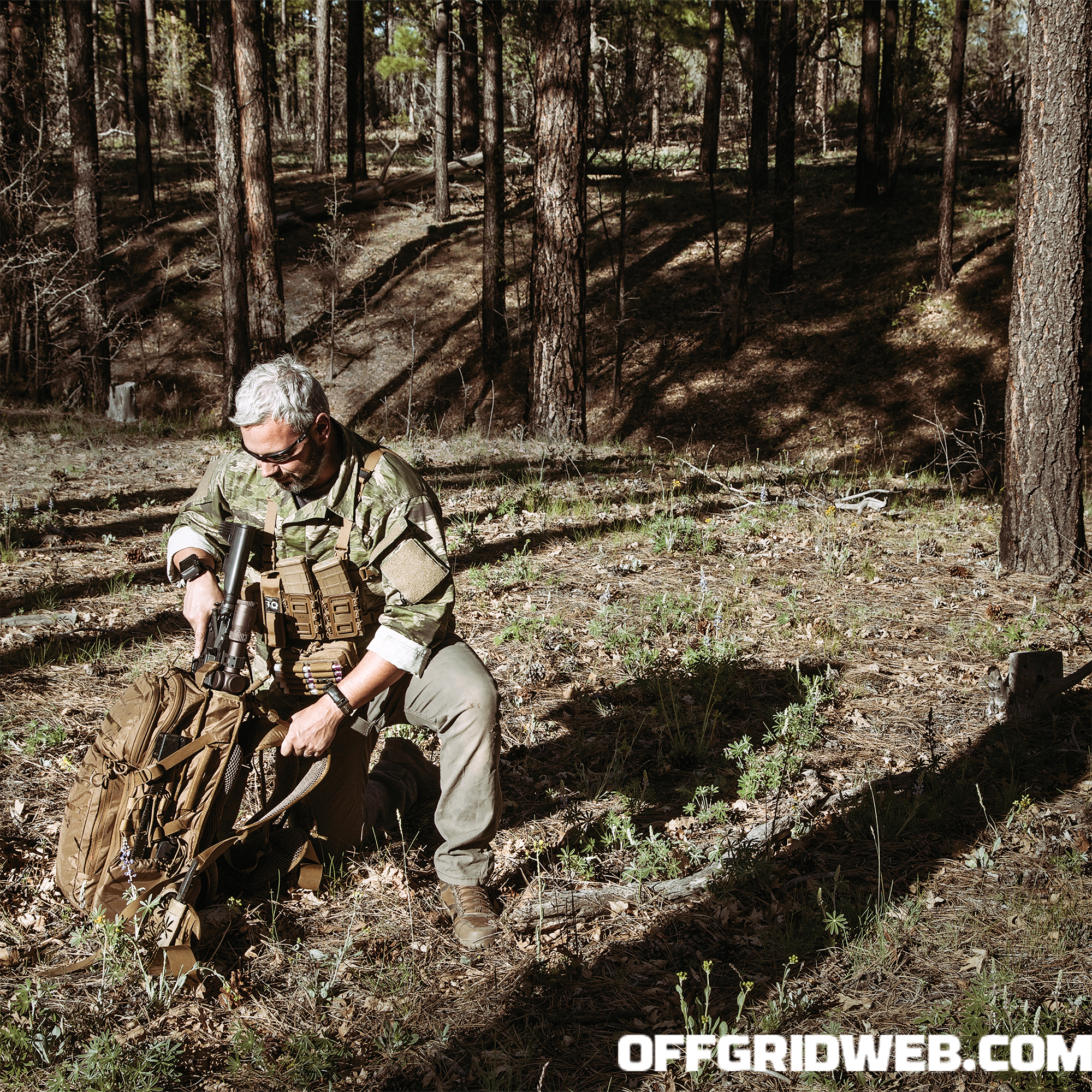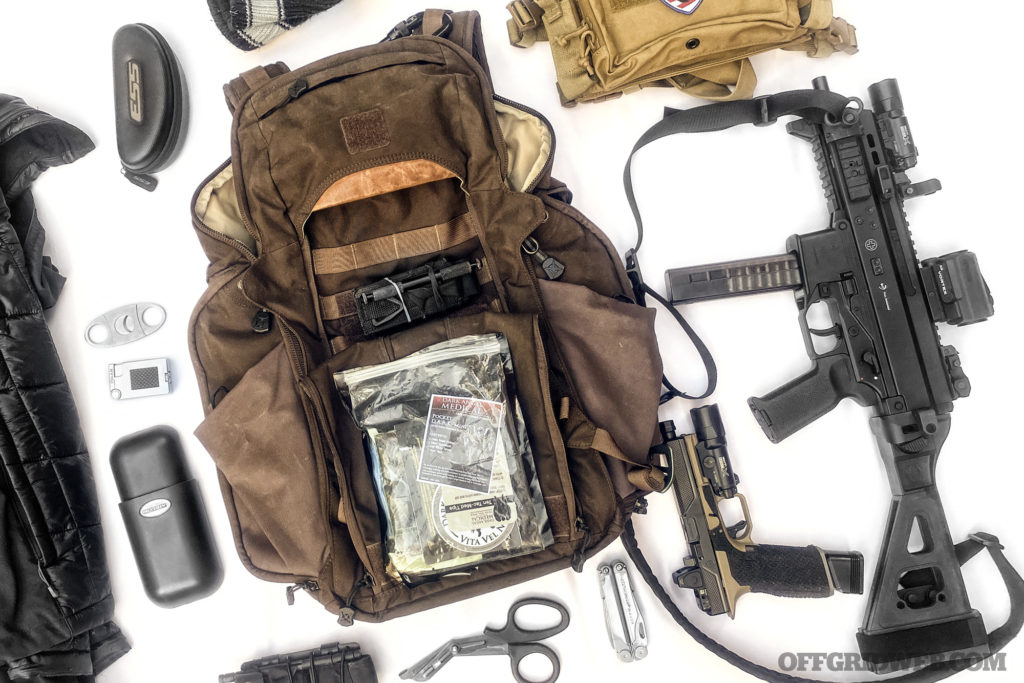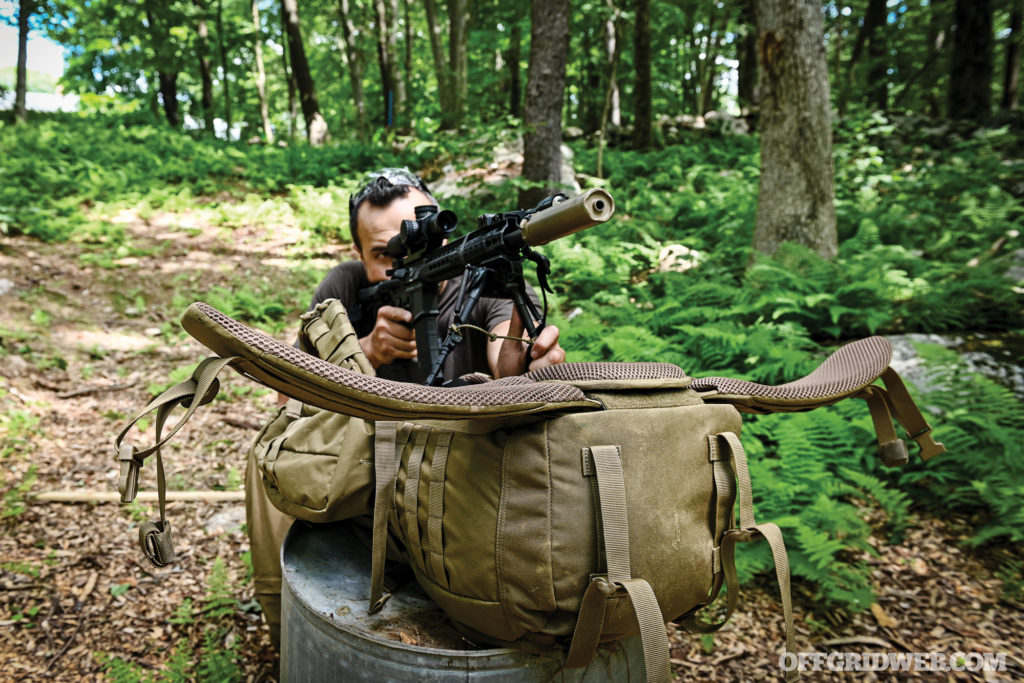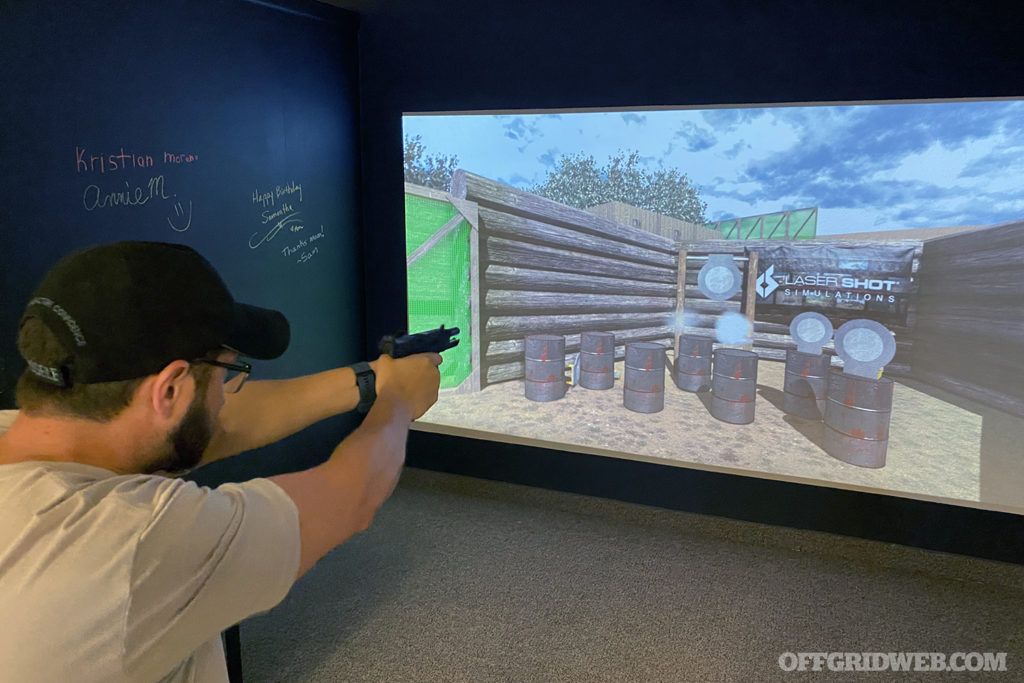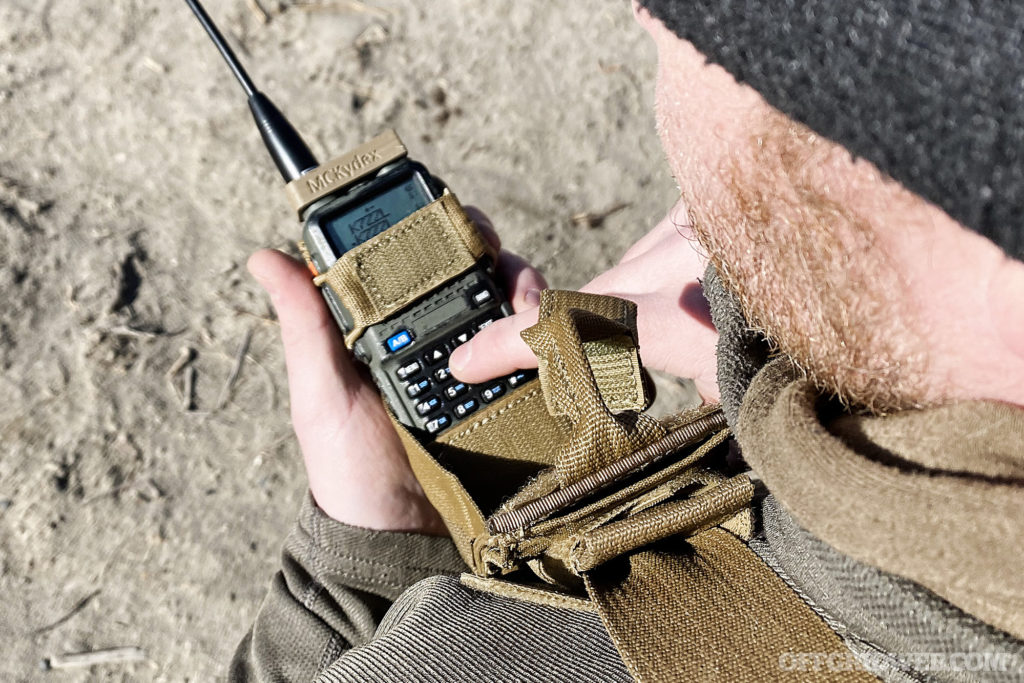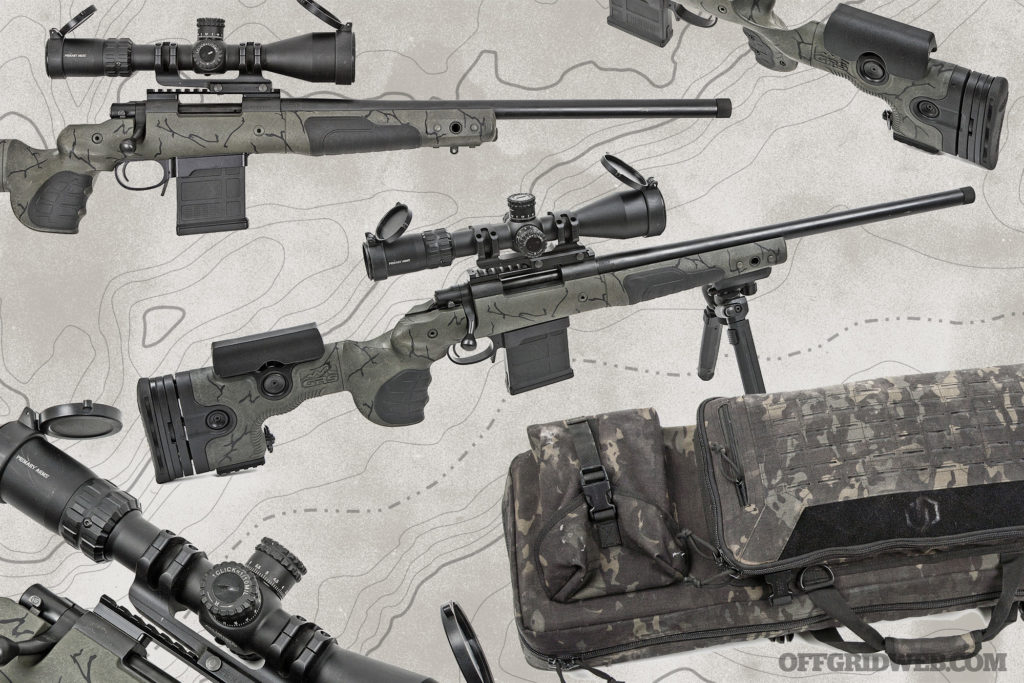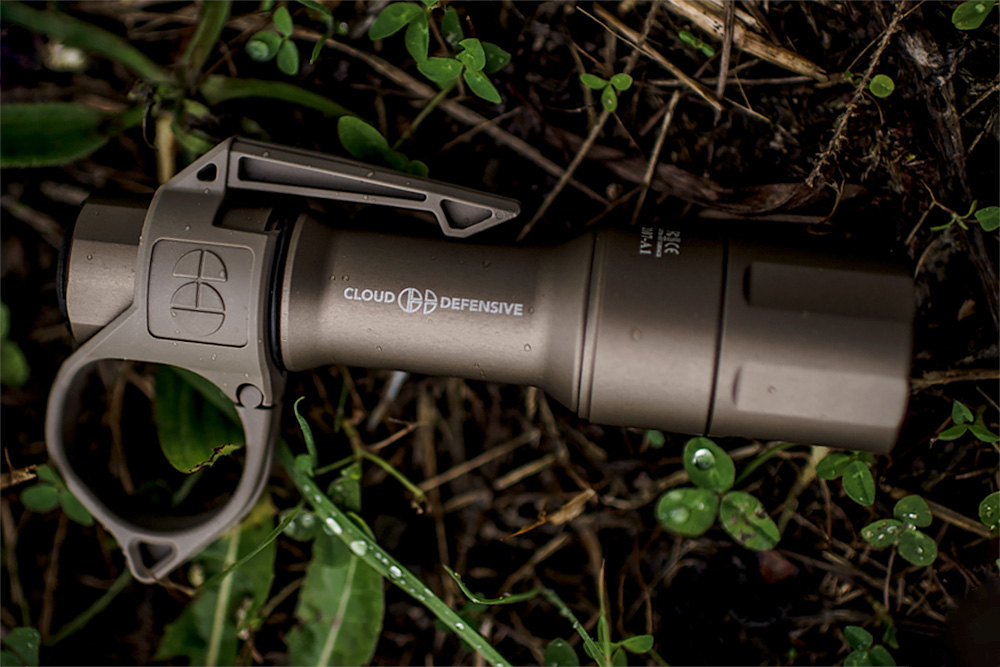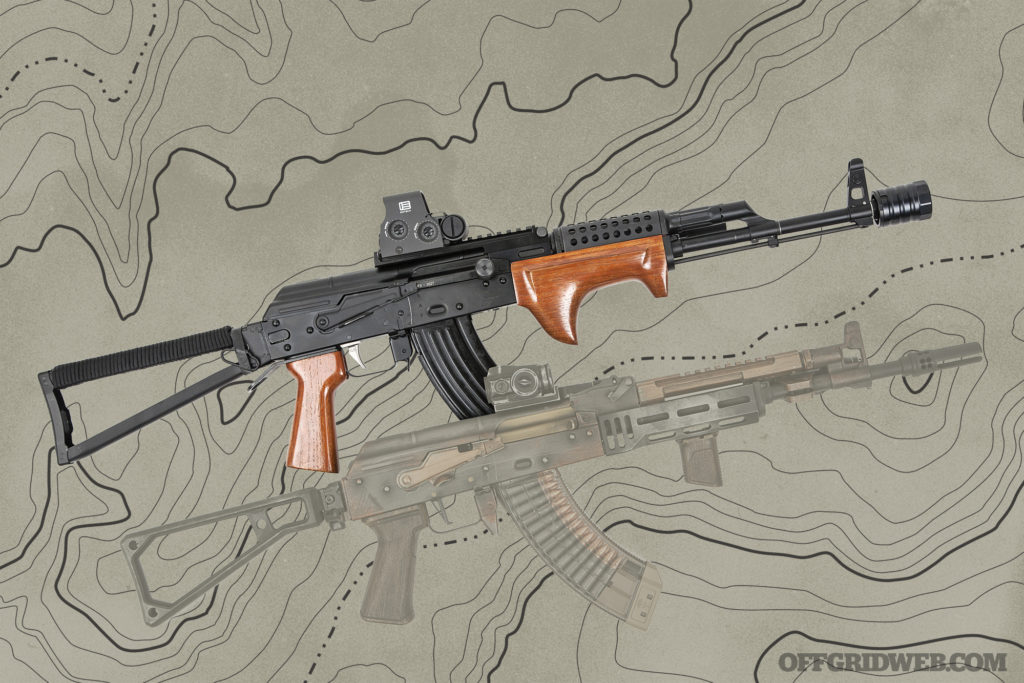We’ve spent a lot of time recently talking about body armor and plate carriers. It’s a topic we think is especially relevant as we continue to see pockets of aggressive unrest that include property damage and crimes against persons. Your equipment should be a reflection of your environment, and you should always take steps to prepare for the worst-case scenarios. Current trends in kit configuration have led to many viewing the chest rig as an accessory or add-on to an armor carriage platform. We agree that this is definitely an excellent use for a chest rig. But the beauty of chest rigs is that they can also be used independent of armor as a stand-alone load-bearing platform. Whether you want to carry spare magazines, radios, shelter-building equipment, medical supplies, or just food and water, chest rigs offer a flexible, ergonomic option to keep your survival gear easily accessible. To illustrate this point, and to examine the primary schools of thought in chest rig design, we’re looking at two specific products to represent two major categories: micro chest rigs and heavy chest rigs.
MICRO CHEST RIGS
Redwire Gear Emergency Management Rack (EMR)
We’ve had our Redwire Gear EMR chest rig for years, and despite the absolute deluge of compact, minimalist, low-vis, and micro chest rigs to hit the market over the last couple years, we still haven’t found one we like better than the EMR. It’s a simple panel with a 6-row-by-6-column grid of laser-cut slots in lieu of traditional MOLLE-compatible webbing. It comes complete with an H-harness constructed from 1-inch nylon straps and is assembled using six Fastex-style buckles.
The back of the panel is covered in hook tape from edge to edge, with a removable loop-side panel if you don’t need the stick-on capability. The combination of hook tape and buckles makes the EMR usable as a stand-alone chest rig, clip-on front panel for QASM-equipped plate carriers, or even to attach onto some assault packs with loop tape panels (the 5.11 AMP12 pack, for example). With the H-harness, it can also be slung over a vehicle headrest, and the waist strap connected around the seat to create an ad-hoc seatback load carriage setup. When configured lean enough, this micro chest rig completely disappears underneath a windbreaker or hoodie.
We’ve reconfigured ours a number of times over the years, but believe we’ve found the goldilocks setup for it (for now):
- 2 x G-Code Scorpion Soft Shell Rifle Mag Carriers
- 1 x HSGI Bleeder/Blowout med kit
- 1 x Greyman Tactical STRAP tourniquet carrier
- 1 x Redwire Gear Demo pouch
- 1 x Explosive Ops Gear Mk1 Chem Light Panel
Above: The HSGI Bleeder/Blowout Pouch holds just enough trauma gear to cover likely battlefield wounds.
The G-Code Scorpion pouches allow us to use a variety of rifle mags from AR-15 to AR-10/SR-25 to AK pattern. The High Speed Gear Bleeder/Blowout pouch has been around for years and is a prime example of the “if it ain’t broke …” axiom. It’s a compact, low-profile design that has just enough room for a basic blowout kit including chest seals, combat gauze, compact pressure dressing, and a set of nitrile gloves. The only thing that doesn’t fit inside the kit is a tourniquet, which we’re able to fix by threading a bungee-based STRAP band to the small laser-cut MOLLE panel on the side of the pouch. There’s also a slot in the back of the Bleeder/Blowout pouch for trauma shears, with positive snap-close retention.
The Demo pouch, Redwire’s answer to the growing trend in drop-down or sub-abdominal style pouches, is augmented with a Mk1 chem light panel from Explosive Ops Gear. We originally had the panel stocked with 10 4-inch miniature chem lights, but found these had a habit of falling out during rigorous movement. So, we went with the larger 12-inch “hand flare” chem lights that feed through both sets of loops. They’re a little bulky but provide more light than the minis and are held rock-solid secure on the panel.
Inside the Demo pouch, we have a small IR “firefly” beacon for marking/identification under night vision as well as a compact Sport Smoke smoke grenade and smaller elastic-loop panel for miniature IR chem lights. We also have a 50-foot length of 4-in-1 FireCord. This looks just like standard 550 parachute cord, but the outer nylon sheath can be split open to reveal a strand of Dyneema that can be used as fishing line or a friction saw, a strand of waxed linen tinder cord, and a strand of cotton sewing string that can be used to repair gear or for wound suturing in austere conditions.
The Demo pouch is highly versatile and can be loaded with anything from medical gear to snacks to survival tools or demolition equipment, if you’re cool enough to use that for your job. It attaches via a large hook-and-loop panel that just presses onto the back of the EMR. If that’s too much bulk, or you don’t need the extra load carriage, simply tear it off and run the EMR in stand-alone configuration.
Why Choose a Micro Chest Rig?
What is a micro chest rig good for? It is, admittedly, not a whole lot of load-carriage, relatively speaking. But there are some specific applications that this sort of setup is ideal for.
To those working in law enforcement or low-profile protective roles, a micro chest rig is a great way to up your ammo or gear capacity while maintaining maximum concealability. Whether you’re conducting surveillance, working an active shooter response role, or supporting a VIP escort/protection team that doesn’t require large amounts of ancillary gear, micro rigs are an excellent way to feed a carbine or rifle that may be a secondary or worst-case weapon, or to carry other equipment like a radio, large flashlight, or medical gear. Small chest rigs are lightweight, low-bulk, and keep your critical items close at hand and easily accessible with either hand from a variety of positions. If you spend most of your time behind a steering wheel, these rigs can also be more comfortable than adding equipment to a duty belt while being faster than digging through a go-bag or assault pack.
Above: The Redwire Gear Emergency Management Rack is an excellent example of a modular micro rig that can carry a no-frills fighting load for emergency response, while still being concealable under a large hoodie or windbreaker.
For prepared citizens, micro chest rigs allow you to scale your level of response. They can be thrown over a slick plate carrier and just as easily removed when not needed. They’re also a great way to supplement your EDC if/when the situation requires a more aggressive posture. Even if you appendix carry a pistol or other weapon in your daily routine, micro chest rigs will not inhibit your access to pockets or beltline, especially if you forego the Demo pouch add-on.
The author keeps his EMR packed in a go-bag with a First Spear Slick plate carrier. These two pieces of kit paired up allow a fully scalable response for an array of situations that may require just armor, just additional gear, or both. As stated, the Slick and the EMR micro chest rig, even when worn together, still allow normal draw from an AIWB holster, access to an AIWB fixed blade, and full use of all pant pockets for smaller EDC items like flashlight or folding knife.
Above: The EMR’s load carriage can be expanded with Redwire Gear’s Demo Pouch, which hangs down under the EMR.
HEAVY CHEST RIGS
Barrel & Hatchet Ghost
On the other end of the spectrum from the high-speed-low-drag micro rigs are larger, purpose-built chest rigs. Sometimes referred to as general-purpose or patrolling rigs, these offer a substantial increase in load carriage, trading off concealability. They typically have a set of pouches that are hard sewn to the harness. Not intended to be clipped onto a plate carrier, patrolling rigs date back to earlier generations of chest rigs used in places like Vietnam and Rhodesia — for a long time, these setups were referred to as “Rhodesian rigs” due to their popularity in a number of African Bush wars.
They date back to a time before body armor was prevalent on the battlefield, and were worn simply for more ergonomic load carriage. Nowadays, some military units that work in tough terrain or specialize in long-range reconnaissance patrols still use them when direct contact with the enemy isn’t in the mission profile. Some units will wear patrolling rigs while keeping slick plate carriers in their rucksacks. The patrol will stop short of their objective to don armor before striking but have all their immediate-use equipment on them in the meantime.
Our example patrolling rig comes from a new company called Barrel & Hatchet Trade Company. Their rig, which they call the Ghost, was designed by Air Force JTACs (Joint Terminal Air Controllers) who often work attached to special operations units charged with long-range patrols. The JTAC’s job is to call in airstrikes on identified enemy positions. This mission set is clearly translated into the Ghost’s design, which features pouches for up to six AR-style magazines, two radios (one to talk to their teammates, one to talk to attack aircraft), and two general-purpose pouches for medical or sustainment supplies.
Fortunately, if you’re not directing F-16s dropping bombs on ISIS fighters, the radio pouches can be repurposed to hold all kinds of things from water bottles to power bars to sunglasses. They are open-topped with bungee retention cords that can be adjusted for tightness via pinch clip. When adjusted properly, these pouches can even accommodate a full-sized service pistol with weapon light. Even the mag pouches will hold other sundries, thanks to the Ghost’s unique design that features reinforced openings.
Above: The GP pouches on the Ghost rig are great for these Nutrient Survival single-serve rations.
We’re not huge fans of the flap-top mag pouches, but since these pouches are meant to be multipurpose, we understand the benefit of additional closure/retention. Said flaps buckle closed, with no hook-and-loop to make noise or get mudded up. The general-purpose end pouches are straightforward. There are no elastic loops, pile tape, or anything inside the pouches.
Those who like to meticulously organize every item in every pouch might be triggered by the lack of sub-compartmentalization, but the unadorned GP pouches on the Ghost can be pressed into service to hold odds and ends, or even left empty to pick up scavenged items on the fly. Our sample came with an H-harness, by our request, but an X-harness is the current production standard. Generally speaking, the X-harness is more comfortable for long-term wear, but the H-harness is easier to use when throwing a chest rig on over body armor.
Speaking of armor integration, we attempted to integrate our Ghost with our Defense Mechanisms plate carrier. The top-mounted clips on the Ghost click right into the QASM-style female buckles. The Ghost also features a square of hook-side tape on the back side of the main panel, which is placed perfectly if your plate carrier features loop-side tape on the front plate bag.
The Ghost is substantially larger than a micro chest rig or load-bearing placard, with the radio and GP pouches extending well past the edges of a plate carrier. We attempted to use our AXL advanced chest rig retention kit to secure the ends of the Ghost to our cummerbund but ran into a hiccup. The side buckles on the Ghost are all male-end buckles, which defies the trend of male buckles up top, female buckles on the side. The AXL retention kit also uses all male-end buckles. So this was a no-go in terms of using the AXL kit to secure the Ghost to our plate carrier.
We loaded one GP pouch with Nutrient Survival single-serve rations and the other with a combination of 4-in-1 survival cord, an AR multi-tool, and a Sport Smoke smoke grenade. The radio pouches handily accepted an insulated water bottle and a Leupold spotting scope.
Why Choose a Heavy Chest Rig?
If concealment isn’t an issue for you, a larger patrolling-style heavy chest rig like the B&H Ghost offers advantages in both the amount and array of equipment you can carry. Likewise, if using a chest rig for general outdoor activities like hunting or hiking where armor integration isn’t a concern then a stand-alone rig is likely the way to go. While you may not need 6 … or 9 … or 12 magazines as part of your family preparedness plan, there are a multitude of general-use rigs available, and large flap-style mag pouches can be repurposed to hold all kinds of other things.
Of course, there are also all-MOLLE versions of these kinds of larger heavy chest rigs that can be customized ad infinitum to your specific needs. Especially if you’re the pack mule for young children or other family members, the extra storage capacity will be a boon. Using a heavy chest rig in conjunction with a small daypack or belt-mounted load carriage will also help distribute the weight of survival equipment over several different areas of the body, reducing fatigue on a specific point.
Conclusion
These are just two specific products showcasing two entire weight classes of chest rig. We’re not going to declare a winner or tell you that you should pick a micro chest rig over a heavy chest rig (or vice versa). On the contrary, we urge you to take a hard look at what your realistic needs are and make the best choice from there. Regardless of what size, style, type, or pattern of chest rig you think you need, there are at least two options on the market today that fit your parameters.
SOURCES:
- Redwire Gear > www.redwiregear.com
- Barrel and Hatchet Trade Group > barrelandhatchettg.com
- G-Code > www.tacticalholsters.com
- High Speed Gear > www.highspeedgear.com
- Greyman Tactical > www.greymantactical.com
- Explosive Ops Gear > www.eogvb.com
- Nutrient Survival > www.nutrientsurvival.com
More Articles on Chest Rigs and Plate Carriers
To learn more about tactical load-bearing equipment such as chest rigs and plate carriers, check out some of our previous articles below:
- Front Toward Enemy: Survival Plate Carriers & Chest Rigs
- A Chest Rig for Every Occasion
- Bulletproof Vest versus Plate Carrier
- Haley Strategic Thorax Plate Carrier: First Look
- Dank Robber Chest Rig Review: Unobtanium Gear
Related Posts
The post Hands On: Micro Chest Rigs vs. Heavy Chest Rigs appeared first on RECOIL OFFGRID.


